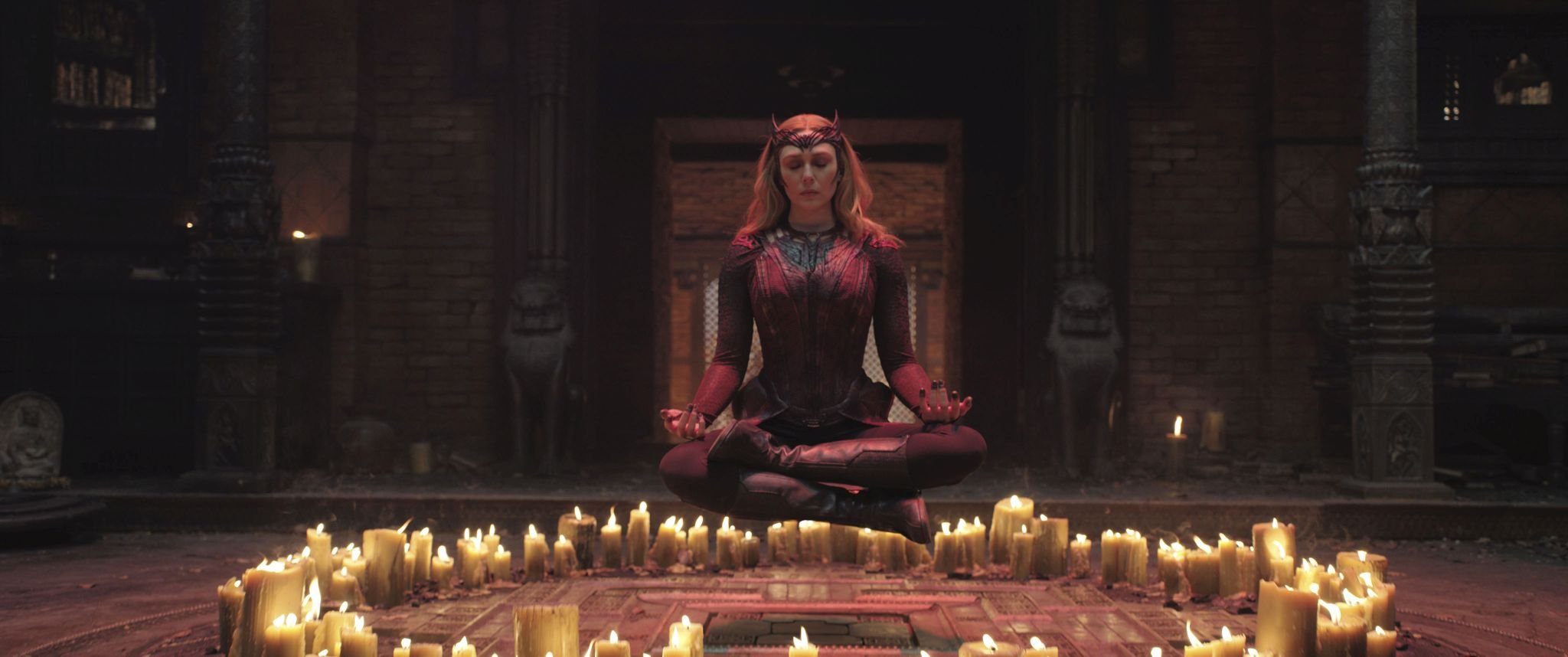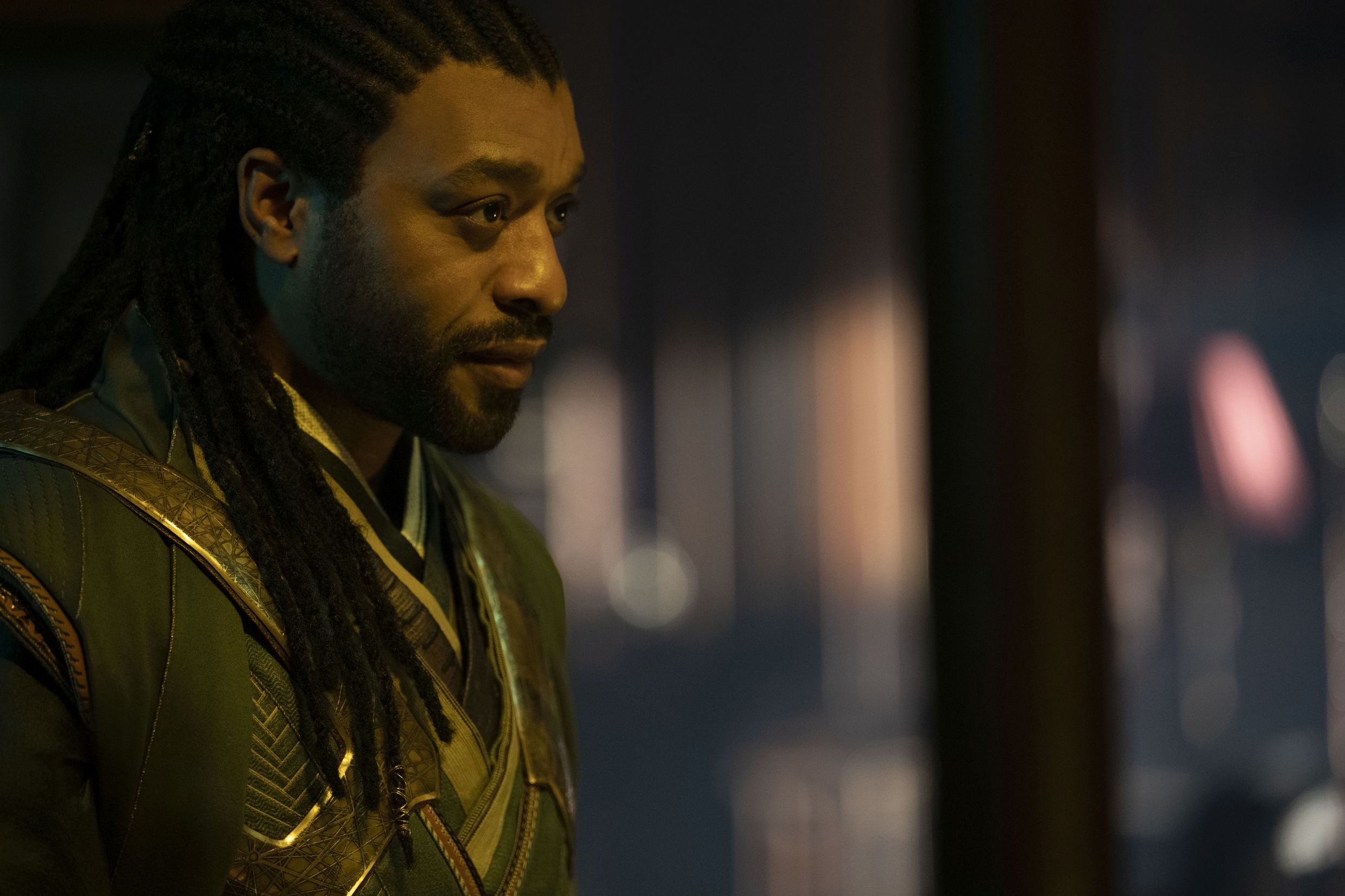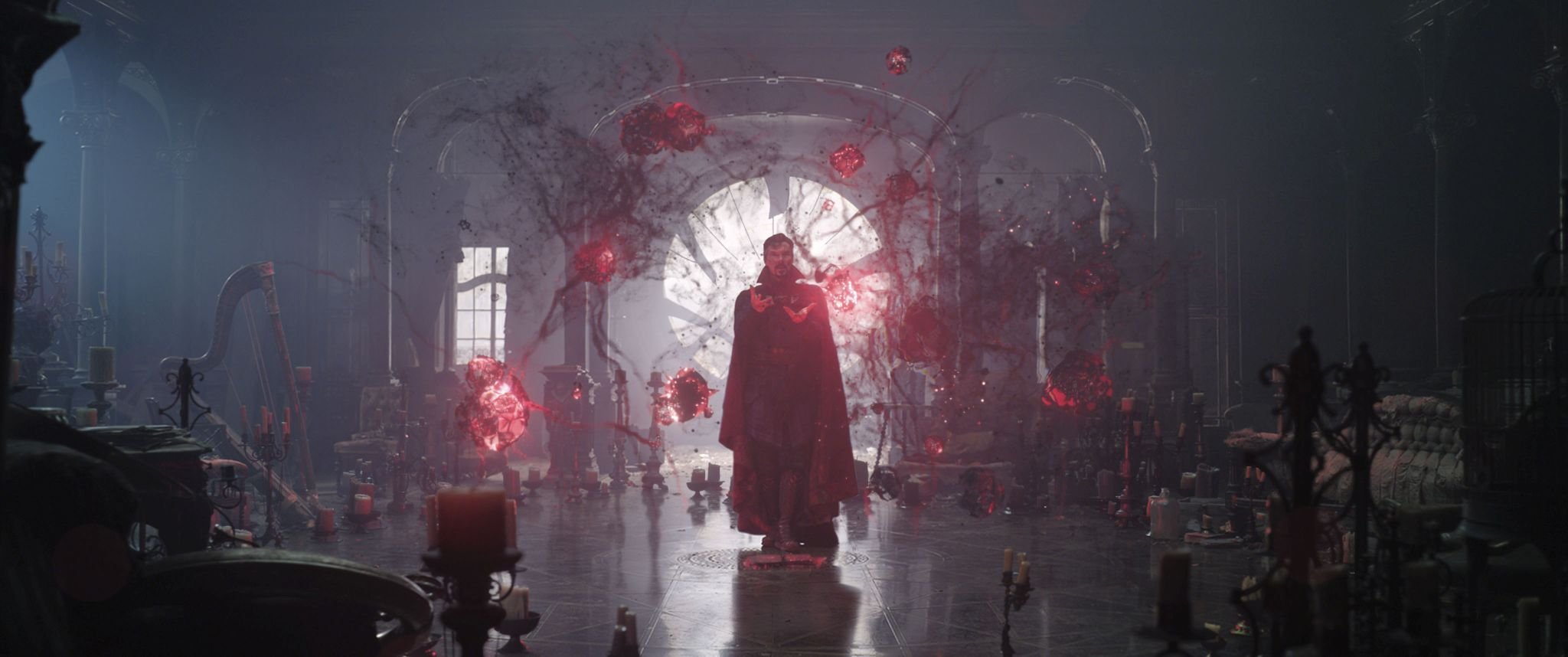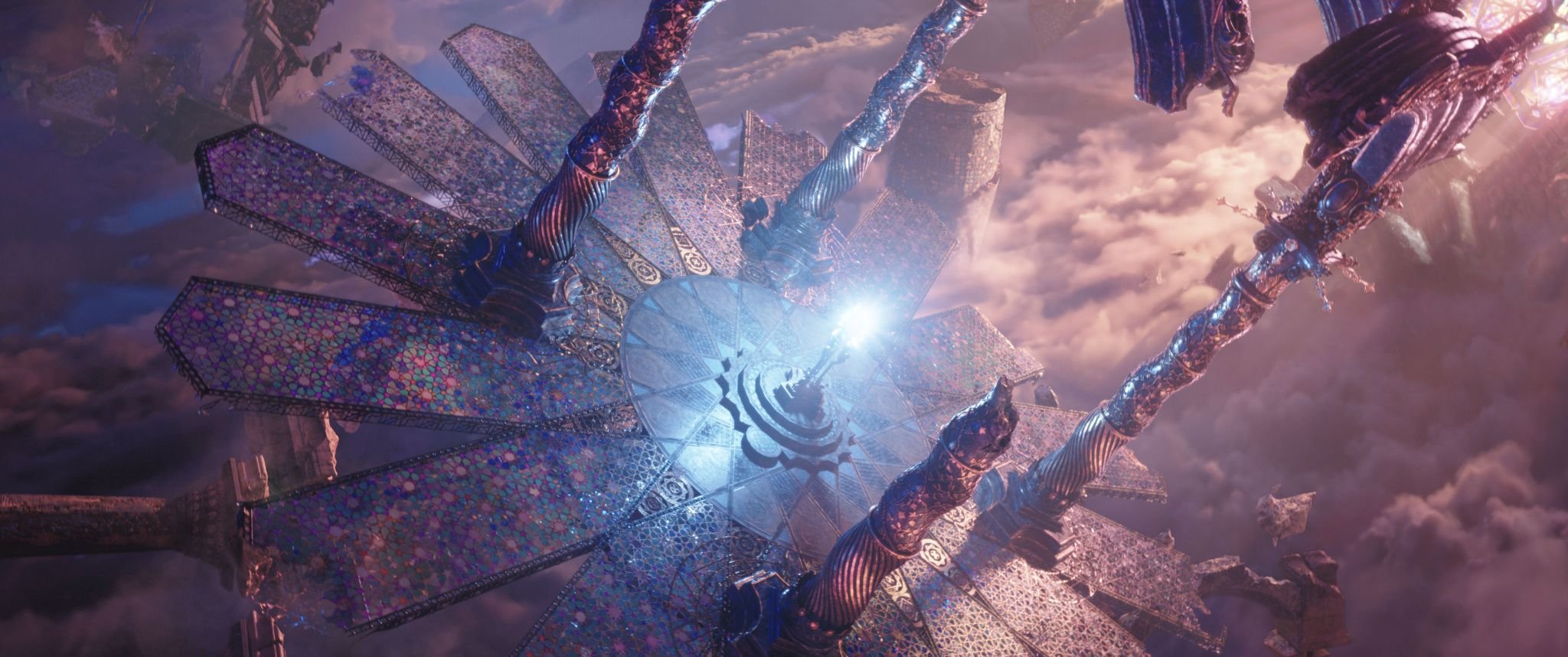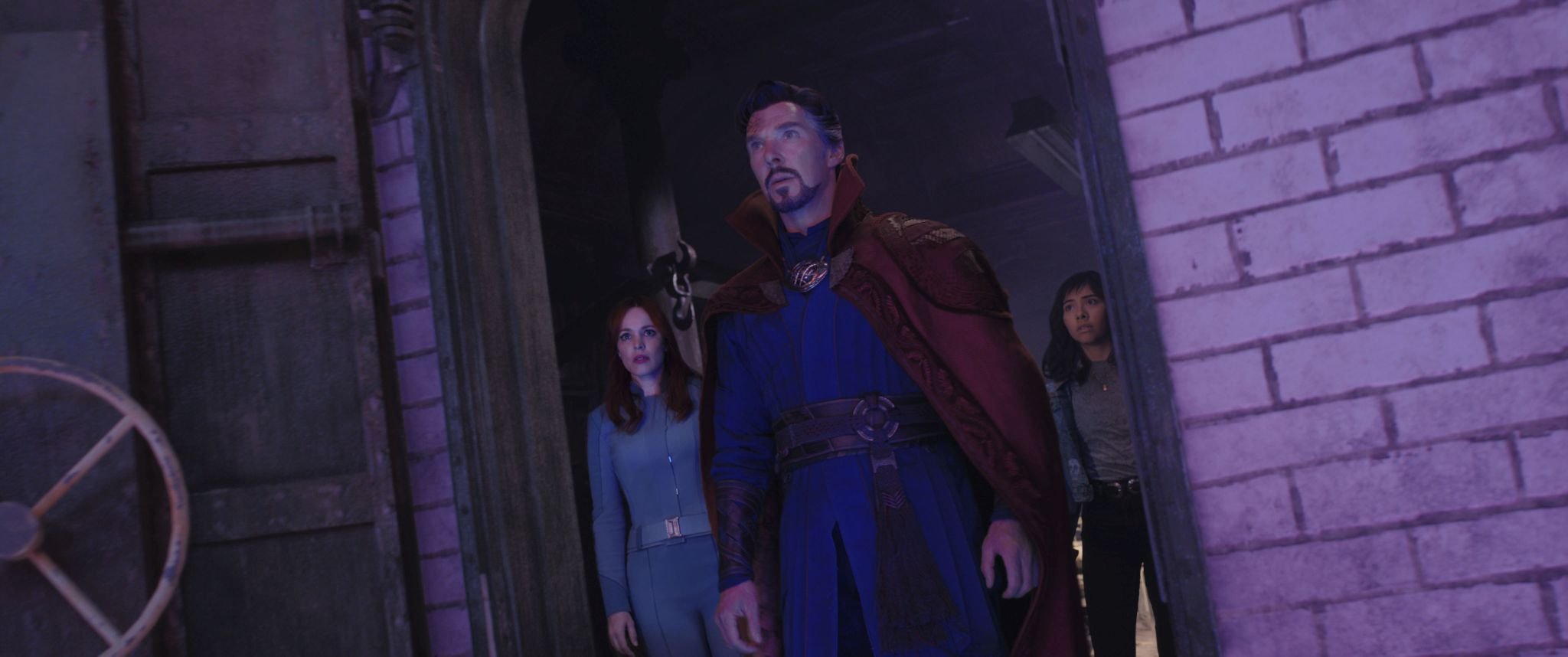MOVIE REVIEW: Doctor Strange in the Multiverse of Madness
DOCTOR STRANGE IN THE MULTIVERSE OF MADNESS– 2 STARS
A shade more than six months ago in this review space, Eternals was presented as the “most mystical, talkative, and far-fetched the Marvel Cinematic Universe has endeavored to date.” Its lurid pageantry and excessiveness was going to require folks to need “an atlas and a social studies tutor to get the ancient history and a stenographer to write it all down.” Just when you thought that movie was its own jump over an ocean of proverbial sharks from the blueprint of the Marvel Cinematic Universe, here comes Doctor Strange in the Multiverse of Madness to levitate all the gigantic leaps even higher.
Put the atlas away and send the stenographer on vacation. For this one, you’re going to need a Ouija board, a witch doctor, a semester’s worth of Disney+ homework, and either a giant Ambien or the PASIV machine from Inception to join the dream party. OG Spider-Man trilogy director Sam Raimi stuffs this movie with all of his signature garish monstrosity that can fit under a PG-13 rating. Prepare to be dazzled and prepare to be dizzied as well.
Continuing to move on after The Blip and the wake of Avengers: Endgame, Dr. Steven Strange (recent The Power of the Dog Oscar nominee Benedict Cumberbatch) wakes up from a very visceral dream about an alternate version of himself rescuing an unknown girl who can move between multiverses. He brushes it off on the morning of Christine Palmer’s (Rachel McAdams) wedding only to go from being a doleful attendee to an interrupting superhero to take down a tentacled monster in pursuit of, as it turns out, the same girl from his dream.
She is America Chavez (Xochitl Gomez of The Babysitter’s Club), and she cannot control or channel her “dreamwalking” power. The person Strange seeks for help, the newly blazoned Scarlet Witch Wanda Maximoff (Elizabeth Olson) who’s been soaking up the poisoning power of the Darkhold book of magic, wants America’s untethered energy for herself to return to a world with the imagined sons Billy and Tommy (Julian Hilliard and Jett Klyne) she lost at the conclusion of WandaVision. Ready or not for her galactic significance, America becomes the possible conduit to accessing and correcting the fractures of universes that have increased since the events of Loki, What If…?, and Spider-Man: No Way Home.
LESSON #1: ONLY IN DREAMS– The catalysts and roots behind the trippiness and intensity of Doctor Strange in the Multiverse of Madness calls to mind the first verse and chorus of Weezer’s eight-minute 1994 opus “Only in Dreams”:
You can't resist her, she's in your bones
She is your marrow, and your ride home
You can't avoid her, she's in the air (In the air)
In between molecules of oxygen and carbon dioxide
Only in dreams, we see what it means
Reach out our hands, hold onto hers
But when we wake, it's all been erased
And so it seems, only in dreams
Channeling those lyrics to this film, the “she” can be either America Chavez, Wanda Maximoff, or Christine Palmer. All three are greater linchpins reaching into the desirable voids to this fantastical story than the titular wizard. The majority of Benedict Cumberbatch’s wrought performance points feel reactionary more than constructive. The women get the best of the drama.
Staying with Weezer, the long-time love interest of Rachel McAdams is the one in Steven’s bones, even while occupying the woulda-coulda-shoulda soulmate territory. Xochitl Gomez is the “ride home” plot mover and the grounded humanity, even if she’s too quickly introduced and made into a repetitive damsel in distress. Lastly, Elizabeth Olson’s evolved character of enormous pain is in every air of atmosphere and unavoidable in stature, even if the script is clunky with lines to convey it the best.
If you took note of all of the referenced and italicized movie and series titles a few paragraphs ago, you will see the daunting amount of prior knowledge that is borderline required to even get close to comprehending Doctor Strange in the Multiverse of Madness. The interconnected nature, this time scripted with mountains of speechified exposition by Loki series writer Michael Waldron, is, as always, Marvel’s ambitious stamp of greater design and purpose. But, like Waldron’s TV series and Eternals before this, the obscurity factor of ludicrousness continues to swell towards an oversaturation point. Truly hardcore fans will have several legs up on the befuddled casual visitors.
LESSON #2: DID IT HAVE TO HAPPEN THIS WAY?– Borrowing a question from the movie, the ultra-convenient caveat of the multiverse is that anything can happen and everything's made to seem vitally important. Within the movie, we have moral and just characters either entertaining the now readily available possibility of correcting missed life choices or darkly obsessing over them to a cataclysmic degree. Some of that manufactured gravitas echoes outside the movie where devoted fans are quite invested in the dream fulfillment that is seeing the printed comic book page come to life, even 14 years into this branded celluloid cosmos.
Why did it have to happen this way? One answer is how it seems the only way to raise the MCU’s stakes is to keep making everything bigger because, frankly, they can. Producer Kevin Feige and the stewards at Disney have taken something built on patient and confident investment and splintered it, to a degree, into sprinted exercises of tail-chasing. The other answer is the most harped-about lesson of character examination in the movie.
LESSON #3: ARE YOU HAPPY?-- Supporting characters and thrust-upon rivals alike challenge both the main protagonist and main antagonist at several points on the simplest gauge of pleasant stability and what lies they are telling themselves about having some. Since the cathartic victories and sacrificial losses of Avengers: Endgame, Marvel has gone out of their way to orchestrate a very respectable parade of grief therapy strewn across many forms and concentrations. The perilous quests for healing towards renewed happiness have been the goal of this entire phase.
Now, in a television series, that weight has room to permeate. In this singular and massively rejiggered blockbuster, the moments to slow down for gravitas feel both forced and rushed. Chiwetel Ejiofor's Baron Mordo and Benedict Wong's Wong are mere footnotes, let alone the promised and overhyped cameos.
That question of entertaining fulfillment can carry over to the audiences of Doctor Strange in the Multiverse of Madness. Even greatly sanitized, the release of terrifying weirdness will be a certain draw and redeeming quality for many. Raimi’s penchant for bombastic schlock, embracing an increased level compared to other Marvel films, screams out of every pore and portal. Showy spectacle is certainly at the forefront with aggressive and sometimes shabby visual effects creations for a film of this budget and magnitude. Likewise, Raimi’s trusty composer Danny Elfman drowns the soundscape in dread, losing a layer of harpsichord-assisted panache that came with Michael Giacchino’s original and ornate musical score.
Taking into account the multiplication of Spider-Men from Spider-Man: No Way Home, the Michael Bay-level of bastardization of human history perpetuated by Eternals, all the timelines splintered by the Disney+ shows, the new catastrophes of Doctor Strange in the Multiverse of Madness, and curated hints of what’s next, the Marvel Cinematic Universe is continuing to go in a ballsy, bold, and altogether odd direction that is flirting with disorder and dubious optics. For better or worse, the messy multiverse toothpaste is out of the tube and not going back in without making a big mess of its own first.
Sure, Feige’s hits will keep on coming, granted by the good graces earned as the czar of this expanding vision. However, at what point will these otherworldly paths, constructed in a funhouse made of more disposable buzz than intriguing mirrors, become more exhausting than exciting, especially considering this current entertainment marketplace where leaks, spoilers, and over-promotion reign supreme to reduce the surprises? We may already be there and not fully realize it.
LOGO DESIGNED BY MEENTS ILLUSTRATED (#1033)


